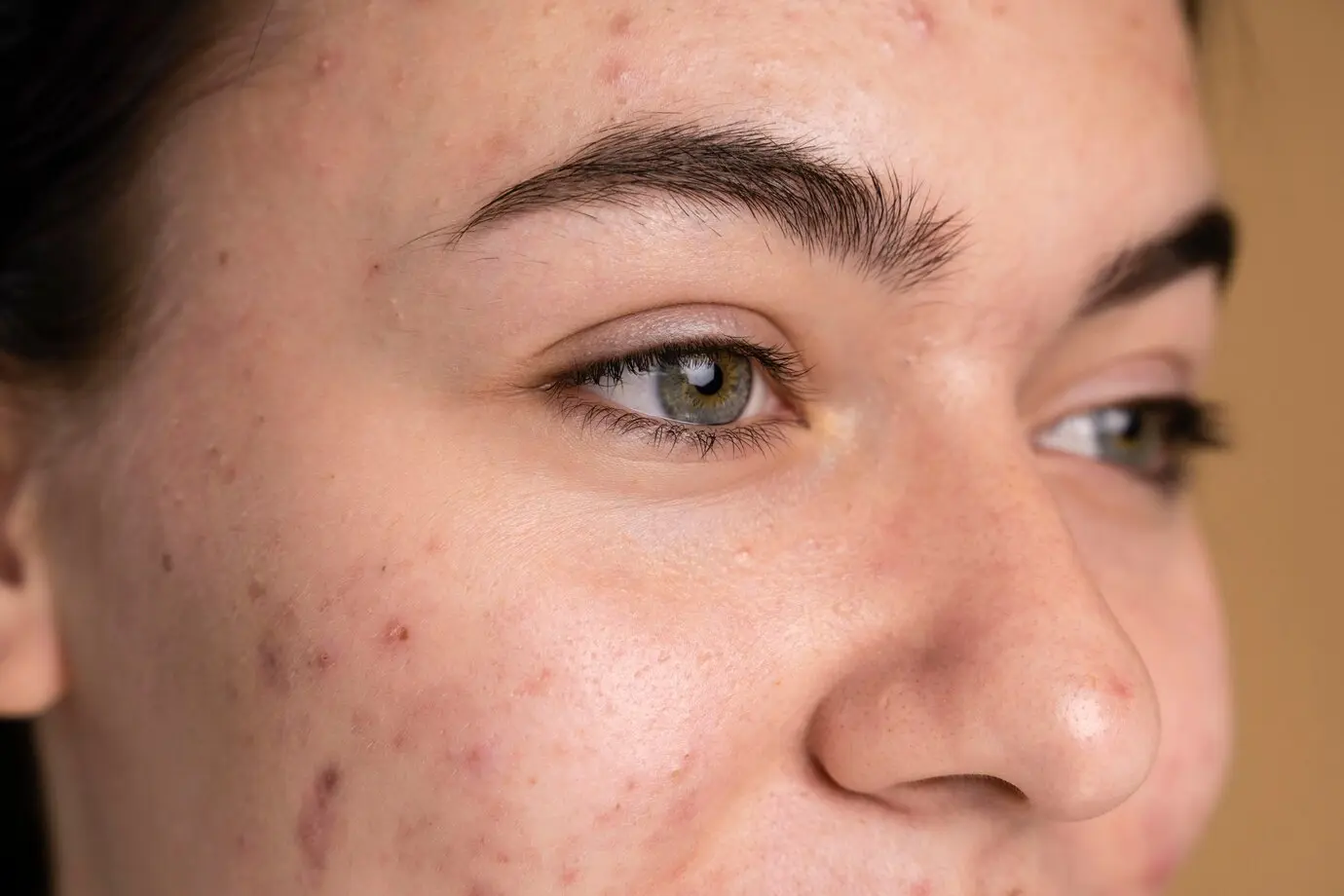Many people confuse freckles with melasma, even though the difference between them is quite clear in terms of appearance, causes, and even treatment methods. In this article, we’ll cover everything you need to know to understand the difference between freckles and melasma, with a focus on the causes and effective treatments for each—based on the latest studies and medical recommendations.
What’s the Difference Between Freckles and Melasma?
Here are the key differences between freckles and melasma:
- Color:
Freckles range from light to dark brown, while melasma tends to be brown or gray-brown. - Size and Distribution:
Freckles appear as small, scattered spots, whereas melasma appears as larger patches and is usually symmetrical on both sides of the face. - Causes:
Freckles are often caused by sun exposure along with a genetic predisposition, while melasma is usually linked to hormonal changes such as pregnancy or the use of birth control. - Most Affected Groups:
Freckles are more common among people with fair skin, while melasma predominantly affects women, especially during their reproductive years.
Types of Freckles
Freckles aren’t all the same; they are classified into several types:
- Simple Freckles (Ephelides):
These appear during summer and fade gradually in winter. They’re common among people with fair skin. - Solar Lentigines (Sun Spots):
Also known as age spots or liver spots, they result from long-term sun exposure and do not fade during winter. - Genetic Freckles:
These are hereditary and usually appear from childhood.
Causes of Sudden Appearance of Freckles
Although freckles are often inherited, several factors can cause them to appear suddenly, such as:
- Intense sun exposure without protection
- Hormonal changes
- Certain medications such as anti-inflammatory drugs and antibiotics
- Aging
Freckle Treatment
Freckle treatment depends on their type and cause. Some of the most effective methods include:
- Brightening Creams:
These contain ingredients like hydroquinone, niacinamide, or vitamin C and help reduce pigmentation. - Laser Treatment:
Techniques like Q-switched or Fraxel laser are used to remove solar freckles. - Chemical Peels:
These help renew skin cells and reduce dark spots. - Sunscreen:
Essential to prevent freckles from worsening. It is recommended to use a product like Tonederma Sunscreen SPF 50+ daily to protect from harmful UV rays.
It’s always advised to consult a dermatologist before starting any treatment.
Causes of Melasma
Melasma often results from a skin reaction to hormonal changes or external factors. The most common causes include:
- Pregnancy (often referred to as the “mask of pregnancy”)
- Use of birth control pills
- Genetic predisposition
- Excessive sun exposure
- Use of unsuitable cosmetic products
- Stress and psychological pressure
Best Melasma Treatments
Melasma treatment depends on the severity of the condition and the skin type. The most effective options include:
- Topical Creams:
Such as hydroquinone, retinoids, kojic acid, and vitamin C. - Laser Treatment:
Used for stubborn melasma that doesn’t respond to creams. - Chemical Peels:
Applied using specific formulas to reduce pigmentation and enhance skin radiance. - Sun Protection:
A vital element in treating melasma and preventing its recurrence.
Melasma treatment requires patience and consistency. Results typically start to appear within 8–12 weeks of consistent care.
Distinguishing between freckles and melasma is essential for choosing the appropriate treatment. Freckles are usually genetic and respond well to laser treatment or topical creams, whereas melasma requires a long-term treatment plan that includes creams, peeling procedures, and sun protection.
According to Sandra Derma’s website, which specializes in skincare, hair, and body products, accurate diagnosis and understanding your skin type play a critical role in ensuring treatment success, especially in cases of deep or recurring melasma.

